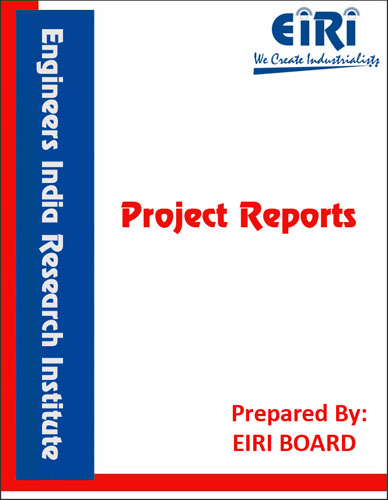The project report includes Present Market Position and Expected Future Demand, Market Size, Statistics, Trends, SWOT Analysis and Forecasts. Report provides a comprehensive analysis from industry covering detailed reporting and evaluates the position of the industry by providing insights to the SWOT analysis of the industry.
The term ‘quartz’ is often referred to as a synonym for silica. Silica (SiO2) is one of the ubiquitous materials in the earth’s crust. Quartz, quartz crystals, quartzite, silica sand, sand (others) and moulding sand are all coined together in one generic name ‘silica minerals’. This is because all these commodities are essentially crystalline silicon dioxide (SiO2) with variations mostly related to their crystalline structure and presence of minor or trace impurities. Silica occurs in several forms giving rise to different varieties.
Crystalline Varieties.
The important varieties of crystalline quartz are vein quartz (massive crystalline quartz); milky quartz (white, translucent to opaque); ferruginous quartz (containing brown limonite and red haematite and almost opaque); aventurine quartz (containing glistening flakes of mica or haematite); cat’s eye (opalescent greenish quartz with fibrous structure); rock crystal (clear, colourless, well-crystallised transparent quartz); amethyst (clear-purple or violet-blue), transparent quartz; rose quartz; smoky quartz; etc. Occurrences of massive crystalline quartz in veins or pegmatites have been recorded in almost all the states.
Clastic or Granular Varieties.
These varieties include sand consisting largely of unconsolidated quartzose grains (0.06 mm to 2 mm diameter), gravel consisting largely of unconsolidated coarse quartzose grains or pebbles (2 mm to 8 mm in diameter), sandstone and quartzite. The occurrences are reported from Andhra Pradesh, Bihar, Delhi, Haryana, Karnataka, Kerala, Madhya Pradesh, Rajasthan,Tamil Nadu, Uttar Pradesh, etc. The silica sand from Naini area in Allahabad district, Uttar Pradesh is of a very high quality.
Cryptocrystalline Varieties
This group includes chalcedony, agate, jasper, onyx, flint and chert. These varieties appear noncrystalline (amorphous) in hand specimens, but under microscope show double refraction which reveals their concealed crystalline nature. These varieties are reported from Gujarat, Uttar Pradesh, Tamil Nadu, Andhra Pradesh, Maharashtra, Madhya Pradesh, Karnataka and Punjab. The most important occurrences of agate are in Ratnapur, Rajpipla area and further west between Tapi and Narmada rivers in Bharuch district, Gujarat, where it is found as pebbles in varying sizes associated with clay washed down by the river flow. Other occurrences of economic importance are reported from Amravati, Aurangabad, Buldhana, Chandrapur, Nashik and Pune districts in Maharashtra; beds of Krishna and Godavari rivers in Andhra Pradesh; Dumka district in Jharkhand; Dhar, Mandsaur, Sihore and Shahdol districts in Madhya Pradesh; and Kachchh district in Gujarat.
Silica. The most common occurrence of silica (qv) is in the form of quartz. Other forms which are found in nature are tridymite, cristobalite, vitreous silica, cryptocrystalline forms (usually as pebbles in chalk), hydrated silica, and diatomite. The principal sources of silica used in the ceramic industry are the sandstones, quartzites, and sands. Quartzites, often called ganister, are firmly consolidated sandstones, whereas sandstones are rather lightly bonded quartz grains or sands.
Silica is the primary ingredient in glass and is usually obtained from high purity sandstones or quartzites by crushing and grinding, or from high-grade sand deposits. The term glass sand may refer to a deposit of sand or, more commonly it is used to refer to the sand after it has been beneficiated from sandstones, quartzites, or natural sands.
Flint or potter’s flint in the strictest usage refers to flint pebbles usually occurring in calcareous or chalk deposits. It is a microcrystalline form of silica with a small amount of combined water. More generally, flint is used to designate either the true flint or quartz.
INTRODUCTION
PROPERTIES
USES AND APPLICATION
ANALYSIS AND APPLICATION OF QUARTZ POWDER
B.I.S. SPECIFICATIONS
GRADES OF QUARTZ POWDER
RESERVES/RESOURCES OF QUARTZ & SILICA SAND
MARKET SURVEY
PRODUCTION STATISTIES OF QUARTZ
DETAILED EXPORT DATA OF QUARTZ POWDER
DETAILED IMPORT DATA OF QUARTZ POWDER
PRESENT MANUFACTURERS OF QUARTZ POWDER
ADDRESSES OF INTERNATIONAL BUYERS
RAW MATERIALS
PROCESS OF MANUFACTURE OF QUARTZ POWDER
PROCESS FLOW SHEET FOR QUARTZ POWDER
PROCESS IN DETAILS FOR QUARTZ POWDER
EXPOSURE LEVELS OF DUST IN QUARTZ MANUFACTURING UNITS
MATERIAL SAFETY DATA SHEET FOR QUARTZ
SUPPLIERS OF RAW MATERIALS
SUPPLIERS OF PLANT AND MACHINERY
SUPPLIERS OF PLANT AND MACHINERY (GLOBAL)
QUARTZ POWDER PRODUCTION LINE
APPENDIX – A :
1. COST OF PLANT ECONOMICS
2. LAND & BUILDING
3. PLANT AND MACHINERY
4. FIXED CAPITAL INVESTMENT
5. RAW MATERIAL
6. SALARY AND WAGES
7. UTILITIES AND OVERHEADS
8. TOTAL WORKING CAPITAL
9. COST OF PRODUCTION
10. PROFITABILITY ANALYSIS
11. BREAK EVEN POINT
12. RESOURCES OF FINANCE
13. INTEREST CHART
14. DEPRECIATION CHART
15. CASH FLOW STATEMENT
16. PROJECTED BALANCE SHEET



